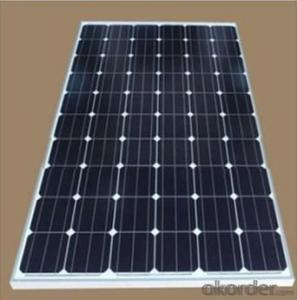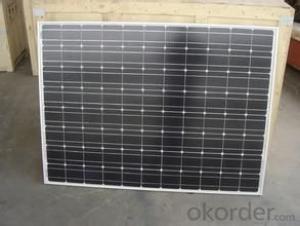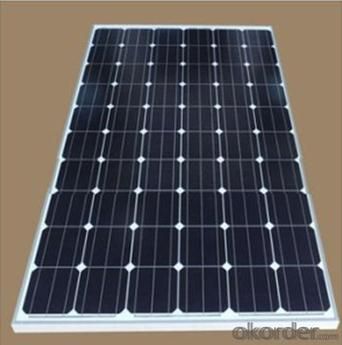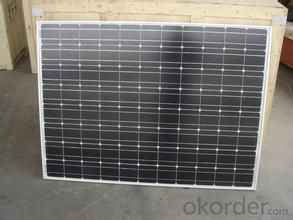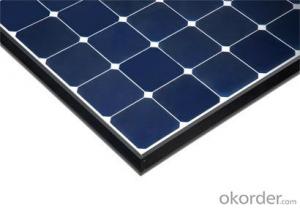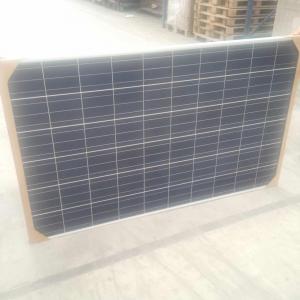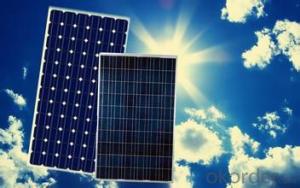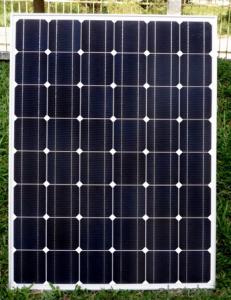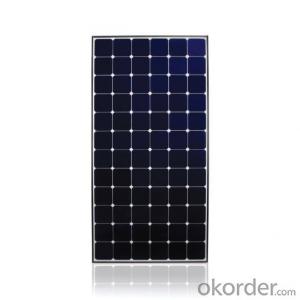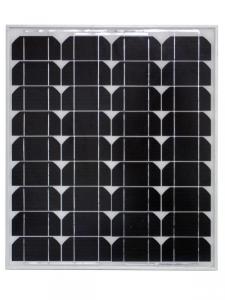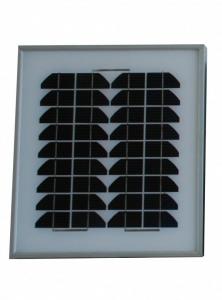250 W CNBM Monocrystalline Silicon Solar Panels for Home Use
- Loading Port:
- Tianjin
- Payment Terms:
- TT OR LC
- Min Order Qty:
- 100 watt
- Supply Capability:
- 1000 watt/month
OKorder Service Pledge
OKorder Financial Service
You Might Also Like
Specification
1.5W CNBM Monocrystalline Silicon Panel for Home Using
Production description
solar depending on the way they capture and distribute solar energy or convert it into solar power. Active solar techniques include the use of photovoltaic systems, concentrated solar power and solar water heating to harness the energy. Passive solar techniques include orienting a building to the Sun, selecting materials with favorable thermal mass or light dispersing properties, and designing spaces that naturally circulate air.
The large magnitude of solar energy available makes it a highly appealing source of electricity. The United Nations Development Programme in its 2000 World Energy Assessment found that the annual potential of solar energy was 1,575–49,387 exajoules (EJ). This is several times larger than the total world energy consumption, which was 559.8 EJ in 2012.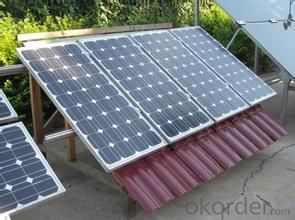
Feature
1.High conversion efficiencies resulting in superior power output performance.
2.Outstanding power output even in low light or high temperature conditions
3.Optimized design for ease of soldering and lamination
Physical characteristic
1. Rigorous quality control meets the highest international standards.
2. High-transmissivity low-iron tempered glass, strong aluminium frame.
3. Using UV-resistant silicon.
4. IS09001/14001/CE/TUV/UL
packaging
26pcs in one carton 6pallets in 20foot container 14pallets in 40 foot container.
- Q: I know that there is a life expectancy for solar panels, and I suppose, the technology involved. Any information?
- Who okorder /... That suggests that the power the panel output will degrade a little less than % per year. We've had ours up for 5 years now, and I haven't noticed a steady degradation pattern. But the yearly weather is so variable, it's hard to see a pattern. The 2nd year's production was actually higher than the first. It could just be clearer skies or colder temperatures, who knows.
- Q: I was wondering if they create other forms of energy besides electrical that is unwanted. Like heat due to the friction of something, or sound. Also why is a solar panel not able to collect 00% of the energy that is striking its panels. And how could the efficiency of this be hypothetically improved.
- Science. The best solar panels we have only get like 22% of the sunlight for conversion into energy. That is simply the best they know how to make with current technology. And for that your talking about a mobile panel that tracks the sun as it moves at the equator. A solar panel in say Canada is lucky to get 0% even on a sunny day. But even if a solar panel got 00% efficiency, it's still not a lot. Sunlight is too diffuse to be a good power source, and you'd need to cover lots of ground to get power. Worse, you can only get power when the sun is out during the day. So for power at night you'd need a battery, or another source of power. The 'newest' idea is to capture sunlight to make 'lasers' that boil water, to turn turbines and make electricity. They cost way more then they are worth right now though...
- Q: Can solar panels be used for heating water?
- Yes, solar panels can be used for heating water. Solar water heating systems utilize the sun's energy to heat water for domestic or commercial use. These systems typically consist of solar collectors, which absorb sunlight and convert it into heat, and a storage tank to store the heated water.
- Q: How do solar panels impact wildlife?
- Solar panels can have both positive and negative impacts on wildlife. On the positive side, solar panels provide clean and renewable energy, reducing dependence on fossil fuels and mitigating climate change, which can have indirect benefits for wildlife populations. Additionally, solar panels can create new habitats for certain species, such as birds, by providing perching and nesting opportunities. However, there are also potential negative impacts to consider. Solar farms can disrupt and fragment natural habitats, displacing or causing harm to certain species. Birds may be at risk of collision with solar panels, although proper installation and design can help mitigate this issue. To minimize these negative impacts, it is important to carefully plan and design solar projects, taking into account wildlife conservation and habitat protection measures.
- Q: How efficient are solar panels when it comes to turning light into energy? If it's not 00%, why? Can it be improved? Also, how do solar panels work, exactly.
- Solar okorder
- Q: How do solar panels connect to the electrical grid?
- Solar panels connect to the electrical grid through an inverter, which converts the direct current (DC) produced by the panels into alternating current (AC) that can be used by homes and businesses. The inverter is then connected to the electrical grid, allowing any excess electricity generated by the solar panels to be fed back into the grid and used by other consumers.
- Q: Can solar panels be installed on a streetlight?
- Yes, solar panels can be installed on a streetlight. This is known as solar street lighting, where solar panels are mounted on top of streetlights to generate electricity from sunlight and power the lights.
- Q: Can solar panels be used for irrigation systems?
- Yes, solar panels can be used to power irrigation systems. Solar energy can be harnessed by the panels and converted into electricity, which can then be used to run pumps and other components of an irrigation system. This renewable energy source offers a sustainable and cost-effective solution for powering irrigation systems, especially in remote or off-grid areas.
- Q: Well, I am looking for a cheap way on building a solar panel, instead of buying by the manufacturing stores. I would like to stay in the budget up to ,000 dollars. I want to have Solar Energy for my house because the sun is always shining. Is there a way I can make the Light power some of my house? What would I need? How much time would it take?Where can I get the items I need?
- The panels themselves- no. Minimal. For most it is just hosing them off with water as needed to remove dust. Battereis on the other hand are usually needing attention every week to maintain the electrolyte levels. The exception being AGM types. Periodic desulphating may be needed on older setups, but beyond that keeping chickens are more demanding. Batteries are how you store your energy for periods when demand exceeds what the panels can deliver, and at night. How many varies. Factors of how you use energy has most impact. Some people can get by with a few hundred Watts, for others 3 to 5 Kilowatts are needed. For the average American, 5 to 7 Kilowatts as a minimum without some serious changes to how energy is used.
- Q: Can anyone give me some info on how to figure how many panels needed for a 0 volt 2 amp pool motor. Thanks/ Run 5 hours a day
- You okorder /
Send your message to us
250 W CNBM Monocrystalline Silicon Solar Panels for Home Use
- Loading Port:
- Tianjin
- Payment Terms:
- TT OR LC
- Min Order Qty:
- 100 watt
- Supply Capability:
- 1000 watt/month
OKorder Service Pledge
OKorder Financial Service
Similar products
Hot products
Hot Searches
